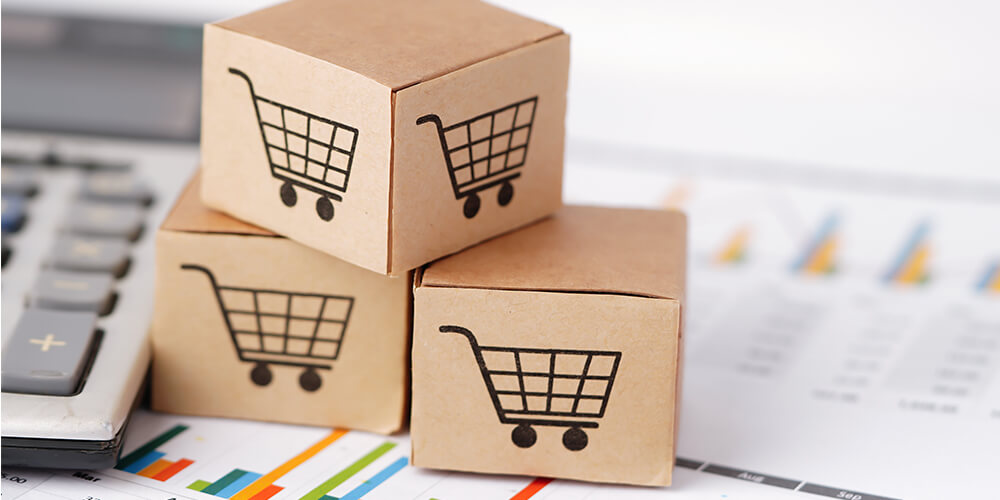Australian retail breaks online record

In a year which delivered a global pandemic, lockdowns and social distancing, online retail has proved a lifeline for the Australian retail sector.
Now Australia Post reveals the nation has broken a record, with November proving the busiest month in Australian online shopping history.
A new record
The latest data from Australia Post reveals a fascinating end to a very unusual year. Shoppers are out in force, but much of their focus remains online.
November data indicates last month was the busiest in Australian online shopping history, up 20.8 per cent compared to the pre-Christmas peak of 2019.
Year-on-year that November growth has increased by 55.6 per cent, while it was also up 16.8 per cent month-on-month.
The report goes on to note over 5.5 million households shopped online in November, up 28.2 per cent when compared to 2019, and many of these were newcomers to the November online shopping frenzy.
Over 2.2 million (41 per cent) of the households shopping online in 2020 did not buy online in November 2019.
Meanwhile, online purchasing frequency also increased in November with over 30 per cent of shoppers buying more than once a week on average, up 55 per cent when compared to the same time last year.
“November was expected to be big for online shopping with Australians fully embracing America’s Black Friday and Cyber Monday tradition, but it has surpassed all expectations,” Australia Post reflected.
“Nationally, online shopping growth for the month was up 55.6 per cent year-on-year (YOY). Victoria and South Australia led the way with both states topping more than 64 per cent growth YOY.”
The trend in perspective

The online acceleration may have bricks and mortar retailers wary, but the reality is real-world retailers were among those benefitting from the trend.
For example, research from Australian Consumer Retail Studies unit at Monash University found 15 per cent of Australians bought groceries online from April to July, instead of visiting a physical store, while 17 per cent bought non-food and non-grocery items online in the same period.
Real world retailers were among the beneficiaries here with major brands pivoting to adapt by rolling out strategies including click and collect and online delivery.
And now foot traffic is beginning to return to physical retail outlets, as consumers embrace their inner shopper both in-store and online.
In fact, The Age noted Victorian shopping centres saw Black Friday foot traffic resurge to around 75 per cent of the numbers seen last year, with higher visitation at some centres such as Chadstone and Melbourne’s four DFOs.
In Sydney, it was similar, with Black Friday traffic numbers at East Gardens exceeding expectations.
“I’m in the centre now and it’s unbelievable. We wouldn’t have thought six months ago that we’d be here now,” one retailer told The Age.
“We’re even trading up on last year.
“It’s the busiest I’ve seen it all year, and this is going to set up most retailers for a positive Christmas.”
Online key to post pandemic future
Meanwhile, experts have noted online ordering will continue to be key to the retail industry’s future beyond 2020.
Forbes explains this year saw consumers actively embrace click and collect (aka Buy Online Pick-up In-store or BOPIS).
“Many customers who previously avoided digital sales channels as part of a physical retail experience are now experiencing it for the first time,” Forbes reflected.
“Given the convenience of BOPIS, a considerable number of these buyers are likely to stay on board, even once the outbreak subsides.”
For retail and customers, online tools like click and collect offer a series of advantages, including:
- Avoiding shipping charges
- Saving time
- Guaranteeing the product is available
- Pick-up the same day
- Shopping at the customer’s leisure
“In many ways, it’s a ‘best of both worlds’ situation,” Forbes explains.
“BOPIS combines the most convenient elements of the brick-and-mortar and e-commerce channels.”
So, what were people buying online in November?
Online purchases

Australia Post explains games saw the greatest increase in purchases online in November, with clothing at number two.
Fashion accessories filled the third position, followed by books at number four, sporting goods in the fifth position, alcohol at number six, pet products at number seven, and athleisure at number eight.
Due to the nature of these products, it’s fair to assume many of these orders were fulfilled by established retailers with a real-world presence.
The retail takeaway
So, what’s the takeaway for retailers? As expected, online retail is flourishing, but store foot traffic would indicate that’s not at the expense of real-world retail.
Instead, bricks and mortar is benefitting from their forced foray into e-commerce, while the easing of restrictions is also seeing shoppers make a welcome return to stores.
You can learn more about current sales trends, including Christmas 2020 forecasts here.